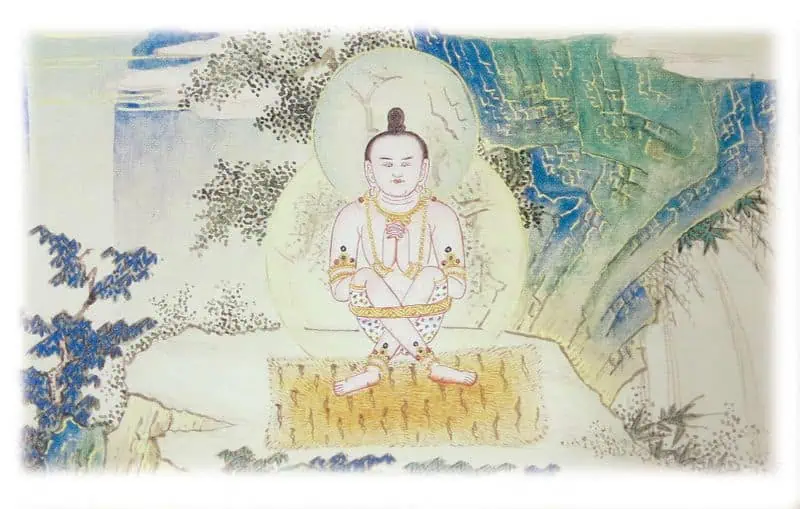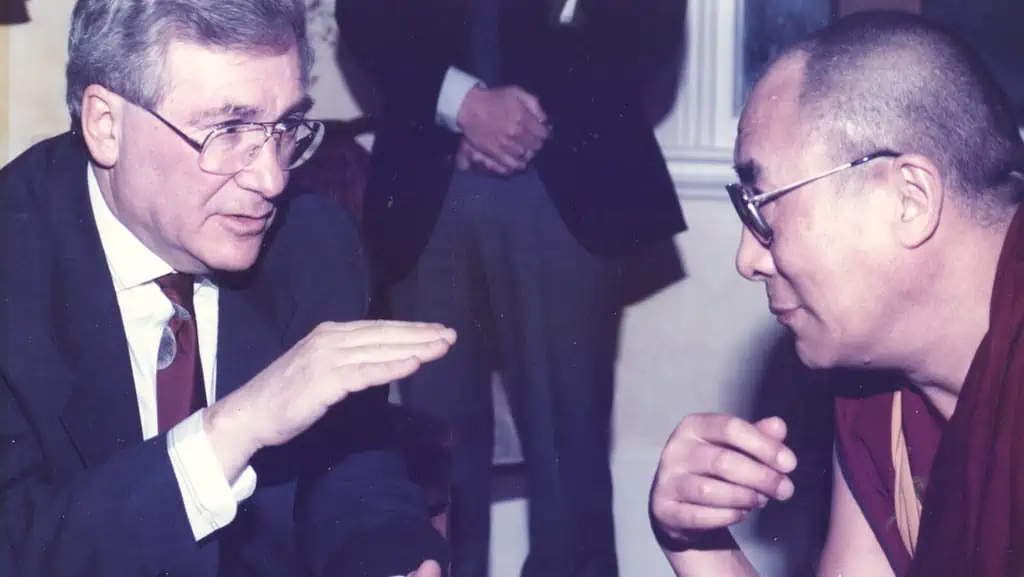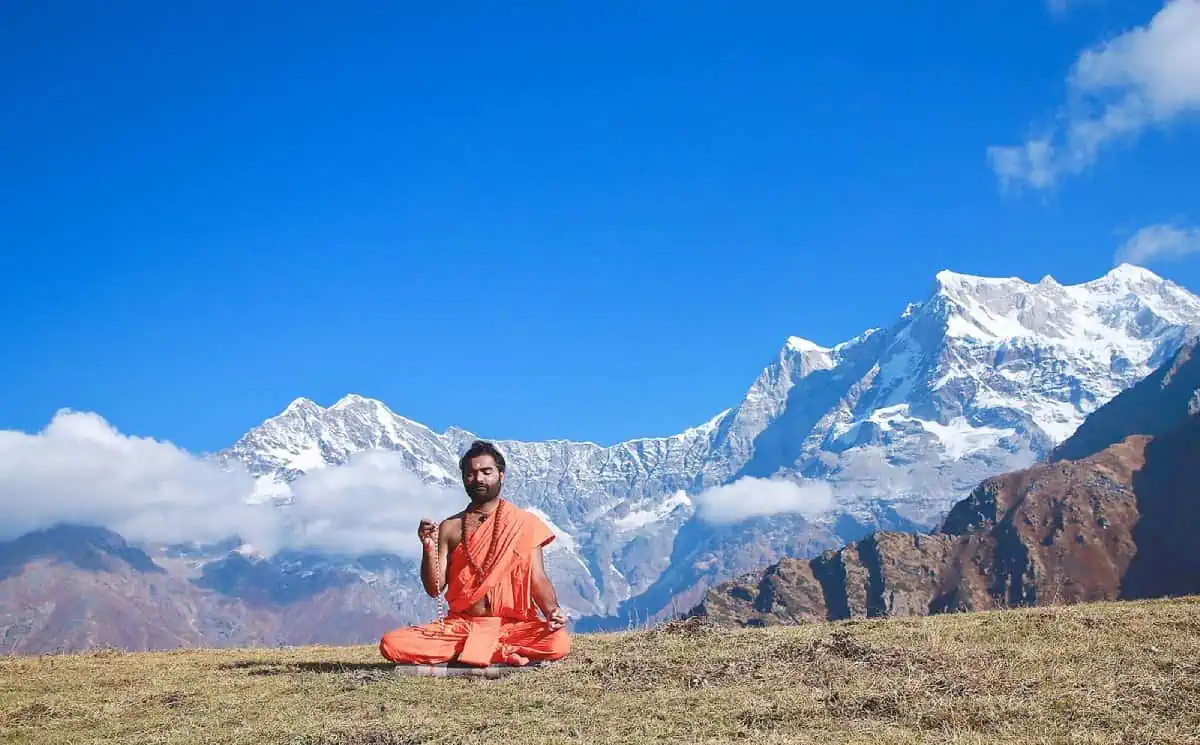Listen to this article:
Key Takeaway
Tummo breathing, an ancient Tibetan technique, combines breathwork and visualization to raise body temperature and enhance meditation.
Tummo breathing, or “psychic heat,” is a unique breathwork and visualization technique first practiced by ancient Tibetan Buddhist monks. This breathing technique was developed in the 8th century to raise their body temperature while meditating in the bitter cold.
Sitting still for hours at a time, clad only in woolen robes, on the peaks of Nepalese mountains proved to be difficult even for the most devout of monks. The temperature-raising practice is aptly named tummo, meaning “fire.” By getting in touch with their inner fire, the Tibetan monks could immerse themselves in a deeper meditative state.
Contents
- 1 How Does Tummo Breathing Raise Body Temperature?
- 2 How To Practice Tummo Breathing
- 3 Benefits of Tummo Breathing
- 4 The Impact of Tummo Breathing on Enhancing Athletic Performance
- 5 Activating Chakras Through Tummo Breathing
- 6 The Science Behind Tummo Breathing
- 7 Tummo Breathing Vs. Wim Hof, and Kapalbhati
- 8 Tips and Contraindications
- 9 FAQs
How Does Tummo Breathing Raise Body Temperature?
“To master the breath is to be in control of our bodies and minds.” – Thich Nhat Hanh

Tummo breathing, otherwise known as g-tummo breathing or g-tummo meditation, combines intense concentration and mental imagery to generate warmth. But how exactly is that possible?
The technique activates the sympathetic nervous system (SNS), or more commonly referred to, as the “fight or flight” response. When your body enters this state, heart rate and alertness increase. Non-essential functions like metabolism are shut down, increasing blood flow to the extremities.
This study from 2015 supports the connection between the SNS and tummo breathing. Their findings show that when a person practices tummo breathing, their metabolism decreases and their alertness increases. They recommend practicing the technique in the morning to increase energy throughout the day.
The science of spirituality is fascinating. Expert breathworker and teacher, Gwen Dittmar, describes tummo breathing as, “an ancient tantric meditation that uses bioenergetic breathing plus visualization to increase inner fire.”
How To Practice Tummo Breathing
Now that you know so much about the tummo breathing technique, you’re probably wondering how exactly to practice it. Below I have outlined the technique in four different steps. It is an advanced and complex breathwork practice. It is advised to begin by practicing it with a breathwork teacher who can guide you through it properly, and keep you safe. At the very least, you can follow along with the video below. Beginners should start out with only about 15 minutes of tummo breathing. If not done properly, it can lead to dizziness and fainting and an aggravated state of alertness.
Prepare
Come to a comfortable seated position and close your eyes.
Rub your hands together fast to create heat using friction, then place your warm hands on your belly.
Cultivate a calm, relaxed mind as much as possible.
Visualize
Stoke the fire inside your stomach, right behind the navel.
Imagine your stomach is a hollow balloon with a ball of fire inside. The fire is surrounding your sacral chakra.
Visualize the ball of fire inside you, travelling up and down your spine, throughout your meditation.
Breath
Inhale deeply through your nose, lean backward slightly, and expand your torso and chest.
Imagine that your inhale fuels the fire inside you, it grows bigger and hotter.
Forcefully exhale through your mouth while pursing your lips, like you are blowing through a straw. Rock your torso forward slightly.
Imagine the flame of your inner fire spreading their heat through your body.
Repeat this pattern five times rocking, breathing, and imagining the heat building and spreading. The rocking motion will help you create a rhythm to follow.
Hold
After your 5th inhale, you will hold your breath in.
Do this by gently swallowing the breath, pushing it down to your naval and holding it in the belly.
Contract your pelvic floor muscles (like you are stopping a stream of urine) and hold the breath between the pelvis and the diaphragm.
Hold this breath for as long as possible, and when you cannot hold it any longer, exhale slowly and relax your muscles.
Repeat this pattern a few times.
Benefits of Tummo Breathing

The Tibetan monks used tummo breathing to stoke their inner fire. For them, an in increase body temperature was the desired result. They wanted to be able to go deeper into their meditation while withstanding the extreme cold exposure of the high altitude in Nepal.
Mindfulness meditation teaches your mind to stay calm and quiet even in the midst of environmental distractions, by eliminating reactions to the stimuli. However, the physiological response to intense cold is difficult to control. By mastering tummo breathing, the monks were not only making themselves more safe and comfortable but also mastering an advanced level of the mind-body connection, experienced by few.
Although the average practitioner may not be able to achieve as a high level of thought control as the monks, you certainly can benefit from the breathing and visualization techniques.
Tummo breathing is also shown to:
- Cultivate clearer thoughts.
- Cultivate an open mind.
- Reduce stress, depression, anxiety, and insomnia.
- Regulate cognition.
- Activate the sacral chakra.
- Strengthen the mind-body connection.
- Tone the vagus nerve.
- Decrease the risk of cardiac irregularities.
- Boost immunity.
- Boost learning and memory.
- Increase alertness.
- Improve visual attention and working memory.
The Impact of Tummo Breathing on Enhancing Athletic Performance
Tummo breathing, renowned for its ability to create warmth, also improves concentration and mental clarity. These aspects are crucial for athletes dealing with high-pressure scenarios. The intense focus required for breathing can help train the mind to stay sharp during competitions.
Furthermore, this practice boosts oxygen efficiency in the body, which is essential for endurance sports where oxygen utilization directly affects performance. By mastering tummo breathing, athletes could potentially enhance their endurance and decrease fatigue.
Another benefit is the possibility of recovery. The increased blood flow and oxygen supply to muscles could aid in exercise recovery. This suggests that athletes might be able to train frequently without risking overtraining or injury.
Lastly, the stress-relieving effects of breathing should not be underestimated. Elevated stress levels can have an impact on an athlete’s performance.
Introducing breathing into their practice could help athletes handle stress more effectively, potentially boosting their overall performance.
Activating Chakras Through Tummo Breathing
Exploring the Role of Chakras in Tummo Practice
When delving into the practice of breathing, we often emphasize its benefits. However, it’s essential to acknowledge the spiritual aspect intertwined with it which revolves around chakras.
Chakras serve as energy centers within our bodies, and tummo breathing plays a role in activating these centers, particularly the sacral chakra.
Significance of the Sacral Chakra
The sacral chakra holds importance in practice as it is situated near our belly button. During sessions, practitioners concentrate on this area and envision a fiery energy present there.
This flame symbolizes not only warmth but also vitality and creativity. Activating the chakra can pave the way for a dynamic and enriched life experience.
By directing attention towards our chakras during practice, we engage with an aspect of ourselves beyond respiration. This connection fosters harmony and tranquility, encompassing not only physical well-being but also mental and spiritual alignment.
Tummo breathing serves as a pathway, towards achieving this balance.
The Science Behind Tummo Breathing

If you’re thinking tummo breathing sounds a little too good to be true, or doubting that one breathwork technique can have so many benefits, then this section is for you. Although the breathing technique is a spiritual meditation practice, it has plenty of scientific backing.
Dr. Herbert Benson, a medical doctor and founder of Mind/Body Medical Institute, conducted extensive studies on the Tibetan meditation technique in the 1980s. He found that tummo breathing could increase core body temperature by 1.9 degrees Celsius and peripheral body temperature by 8.3 degrees Celsius, and decrease metabolism by 64%.
During the experiments, the monks who practice tummo meditation wrapped wet towels around each other while sitting in a cold room. While they were deep in the tummo meditation, their body temperature would increase so much that steam rose from their bodies and eventually dried the towels. Dr. Benson, to his amazement, did not observe any physiological symptoms of coldness from the monks, such as shivering or discomfort.
Using fMRIs, Dr. Benson and his colleagues discovered that during their deep meditative state, the monk’s experienced decreased blood flow to highly active regions of the brain, and increased blood flow to periphery regions and extremities. It is through these experiments that Dr. Benson realized the medical and psychiatric treatment potential of meditation.
Tummo Breathing Vs. Wim Hof, and Kapalbhati

There are multiple other breathing techniques that raise body temperature. How are these similar and different from tummo breathing?
Wim Hof Method
The Wim Hof method and tummo breathing are very similar in practice. They use a similar breathing pattern and are both used to raise the body temperature in extreme cold.
However, the main difference is that the Wim Hof method does not have a spiritual grounding and does not employ visualization techniques. The visualization component of tummo breathing is central to the practice, and studies even show that it is the visualization more than anything that allows practitioners to sustain the increased body temperature.
Kapalbhati Pranayama
Kapalabhati, otherwise known as the breath of fire, also serve to increase internal body temperature through breath. The main differences between Kapalbhati and tummo breathing is, once again, that Kapalbhati lacks the visualization aspect that is central to tummo breathing.
Additionally, in Kapalbhati all of the emphasis is place on the exhale. Whereas in tummo breathing, the inhale and exhale are equally involved.
Tips and Contraindications
Make sure to practice tummo meditation and breathing technique on an empty stomach. For beginners, it is advised to practice the breathing technique for only 10-15 minutes, as it is an intense and complex deep breathing exercise.
Additional contraindications include:
- heart disease
- respiratory disease
- hypertension
- PTSD
Pop quiz! 🧘🤔
Tummo breathing can only be practiced in cold environments.
Visualization is a key component of tummo breathing.
Tummo breathing decreases the bodys metabolism.
FAQs
What does tummo breathing feel like?
Feelings of warmth radiate from the spine to the periphery of the body.
Are Wim Hof and Tummo the same?
Although they are very similar they differentiate in Tummo’s emphasis on visualization, and its roots in Tibetan Buddhism.
How often should you practice tummo meditation?
You can practice it several times a day, whenever you feel the need to increase your energy level.
Who invented Tummo breathing?
Tummo breathing emerged in the 8th century from Tibetan Buddhist monks.







